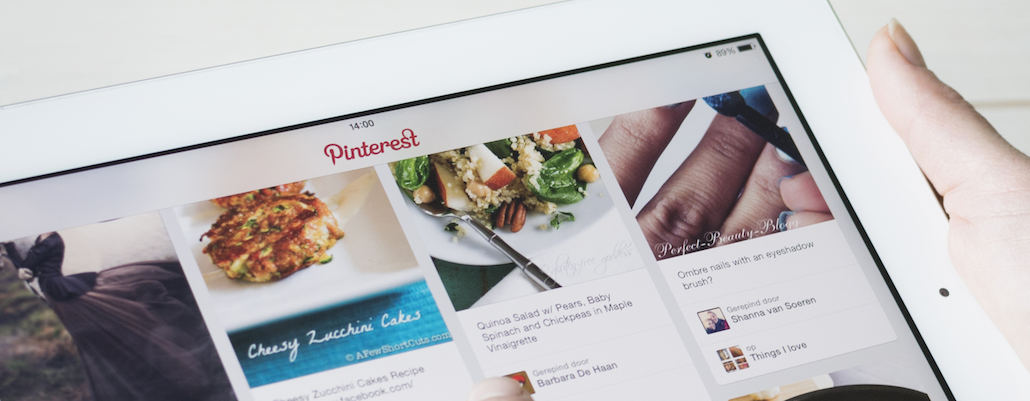Pinterest, armed with new ad products, faces uphill battle with ad buyers

In the last couple of months, Pinterest has been busy pushing new ad products. After a slow entry into advertising, the company debuted several features in quick succession including video ads, three new types of promoted pins, new targeting capabilities and it has been rumored to be working on an “explore” section similar to Snapchat Discover. And yet, it may be too little, too late for the platform.
According to a company spokesperson, about half of Pinterest’s revenue comes from products launched in the last six months. (Projected revenue for this year has been reported at $300 million, although Pinterest missed projections last year. Pinterest declined to comment on the matter.)
Still, despite this glut of new ad features, most agencies Digiday spoke with said they don’t plan to allocate that much more ad spend to Pinterest next year. Several media buyers said they still view Pinterest as a second-or third-tier platform for investment that’s primarily for niche brands, even though the company is emphasizing its search potential and pitching itself as scalable for all brands.
“I don’t think the ad formats have really been groundbreaking enough to shift additional spend to the platform,” said Courtney Blount, associate director at The Media Kitchen. “But their advancements in targeting have been encouraging to see.”
Pinterest is also caught somewhere in between. Google and Facebook are dominating digital ad budgets thanks to their scale and return. Snapchat is the hot new thing. Pinterest is somewhat caught in the middle, without the sizzle of a Snapchat or the media machine that’s Google and Facebook.
On a basic level, media buyers find Pinterest wanting. Take its archaic API, a critical feature of scaling digital advertising. Even though Pinterest introduced the API back in June 2015, Blount said the API still needs to get smoother before Pinterest can scale its advertising. James Douglas, executive director of social media at Mediabrands Society, added that the need for third-party API partners is frustrating for advertisers.
“For me to login and create all the various ad products they promote, I still can’t do that and there are strict capabilities I have to go through a third party for,” he said. “That’s a barrier that still needs to be fixed.”
Lisa Cucinotta, director of social strategy and business development at Horizon Media, said she hasn’t heard that brands are considering “putting heavy dollars” into Pinterest. But she believes more ad dollars will flow to Pinterest if its conversion tracking becomes more sophisticated.
“They are relying on last click, which is not going to tell a strong ROI story,” she said. “Retail is not going to shift to a platform that can’t prove out their ROI story.”
Jenny Marder, director of social media at Red Tettemer O’Connell and Partners, said another reason advertisers won’t go all in on Pinterest is because it lacks one-on-one interactions with consumers. “Unfortunately, the only way to communicate on Pinterest is to see if people are pinning your content, and for many brands that’s not enough,” she said.
Several agencies said that Pinterest commands fewer than 10 percent of their social ad spend, and that at most, the new ad products might increase the spend by a percentage point or two next year. Although agencies were skeptical that Pinterest will become a major scale player, the consensus was that the platform is a good place to advertise for brands in retail, fashion, food and home décor, and that agencies are pitching Pinterest’s new ad units to brand clients in those areas. Advertisers were also intrigued that prices haven fallen from their $30 CPM days. Ads sold on a CPM basis run between $5 and $12, and cost-per-click units range from $1.50 to $4, according to sources familiar with the matter.
The most bullish marketer was Chris Tuff, evp of partnerships at 22squared, who said that Pinterest will expand where budgets are coming from and how much is going to them. A few agencies said that their spend on Pinterest could come from their social and search departments as Pinterest sales reps emphasize advertising around the platform’s search box.
“They are specifically carving out inventory and referring to it as search inventory,” said Kieley Taylor, GroupM head of paid social.
Although buyers view Pinterest as a platform that caters primarily to just a few industries, Pinterest denies that it’s primarily niche or playing catch-up to other platforms.
“I don’t see it [being niche] in our numbers or in our conversations,” said Jon Kaplan, Pinterest head of global sales. Kaplan declined to provide what percentage of Pinterest revenue comes from advertisers in its core areas.
“We don’t want to be playing catch-up in the industry,” he said. “We want to think about how we can lead the conversation because the behaviors on our platform our different.”
Pivotal Research analyst Brian Wieser had a different take.
“It’s difficult for Pinterest [to scale], as it is for anyone who isn’t Facebook and Google,” he said. “And they don’t have the advantage of Snapchat as the bright shiny object who will get ad dollars independent of performance. Pinterest may have had a moment a few years ago where they could have done that, but that moment went.”
More in Media

Media Briefing: The top trends in the media industry for 2025
This week’s Media Briefing takes a look at the top trends from 2025, from digital advertising revenue performance to AI licensing deals.

Digiday Scorecard: Publishers rate Big Tech’s AI licensing deals
Digiday has compiled a scorecard grading AI platforms to make sense of the growing number of players in the AI content licensing market.

Publishers are hunting for AI prompt data — now they’re starting to get it from third-party companies
Publishers are finally gaining some visibility into AI search, as new prompt data tools crack open a black box.





